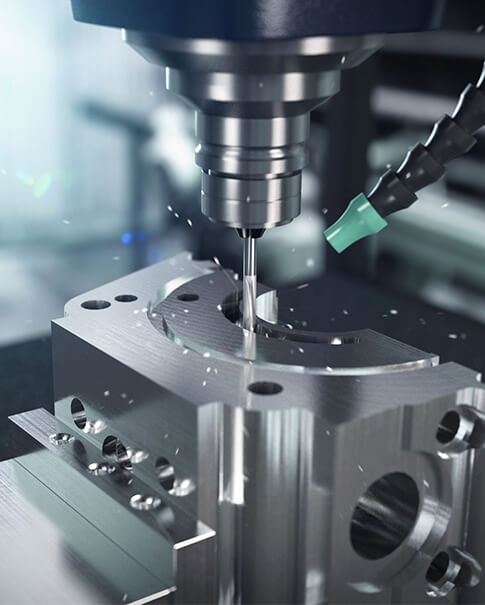
Computer Numerical Control (CNC) machining is a versatile, high-precision traditional manufacturing process that’s ideal for medium to high-volume production runs of complex parts. CNC machining is a manufacturing technique for removing material. It uses sharp cutting tools, available in a variety of shapes and sizes, which are precisely controlled by a computer. With CNC machine rapid prototyping, manufacturers can rapidly produce prototypes and durable parts for specific applications.
Material selection is an incredibly important part of any manufacturing process, but engineers and product teams must be especially diligent when it comes to selecting materials for CNC machining. Since this process is compatible with a wide variety of materials — from metal to fiberglass to wood — it’s easy to mistakenly choose a material that’s sufficient for the project but not the best-suited. In this article, we’ll touch on key considerations for CNC machining material selection and give an overview of some common options.
Key considerations for choosing CNC machining materials
Before getting into the particulars of material selection, product teams must first take stock of their project requirements. Start by considering these four questions:
1. How will the part be used?
Engineers must consider their part’s end-use and where it will be used, as these factors will have a significant impact on material selection. For example, stainless steel and carbon steel are both suitable for CNC machining, but only stainless steel is naturally corrosion-resistant. Choosing the wrong kind of steel here would compromise a part’s longevity. FDA, FAA, as well as any industry-specific regulations should also be top of mind.
2. Does weight matter?
If a part must be light — a common requirement when manufacturing for automotive and aerospace applications — there are plenty of low-density metal options available. Manufacturers might also consider using a plastic like ABS to keep weight down if they’re willing to sacrifice strength.
3. Does the part require high strength or heat resistance?
Strength can be measured in many different ways (tensile strength, wear-resistance, etc.), so engineers should determine what kind of strength — and to what degree it matters — is required for their part. These parameters will impact the size of the pool of viable materials. Similarly, temperature requirements will exclude certain materials from the outset. Engineers should also think about whether their part will be exposed to fluctuating temperatures, as nearly all materials expand or contract in response to temperature changes.
4. What is the project budget?
Material costs almost always influence material selection. The goal of most product teams is to select a material that maximizes desired material properties and performance while minimizing expenditure. Material costs are especially important when it comes to CNC machining because this process produces a relatively large amount of scrap material behind. Some materials — such as specialty metals — are extremely expensive, which could have a major impact on the cost-efficiency of the entire project, considering scrap material output. Engineers should carefully evaluate their budget before making any final decisions.
What Materials Can Be Used in a CNC Machine?
A better question might actually be what materials can’t be used. CNC machines cut through nearly any material you can think of. While you can use a wide range of materials in a CNC machine, the most commonly employed materials used are:
Metals: Such as aluminum, brass or steel
Plastics: Such as Acetal (POM), Acrylics (PMMA), Polycarbonate (PC) and Polypropylene (PP)
Wood: Such as hardwood, plywood or softwood
Foam: Such as carving foam and rigid foam, which tend to be more lightweight yet durable.
Since any material — metal or plastic — that’s hard enough for machining can be used for CNC manufacturing, product teams are spoiled for choice. This short list provides a quick gloss of some of the most common metals materials used in CNC manufacturing today.
Tap into expert advice on material selection
This isn’t an exhaustive list, but it’s clear to see that CNC machining is an extremely versatile manufacturing process that requires thorough evaluation of project requirements in order to select a material best-suited for the part in question. Still, achieving the ideal balance of cost, quality, and time can be challenging.
With a trusted on-demand manufacturing partner like GT, material selection is made easy. Our manufacturing experts have years of experience guiding product teams through the entire product development and production processes, starting with design and material selection. Let’s make something incredible together — contact us to get started.